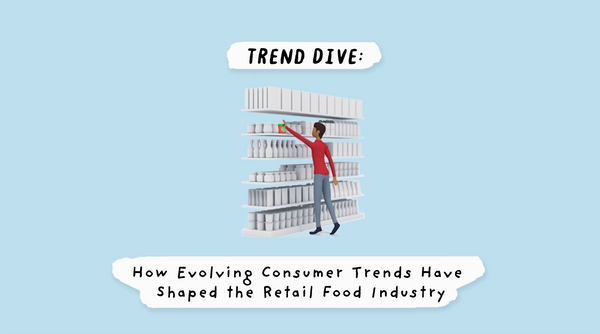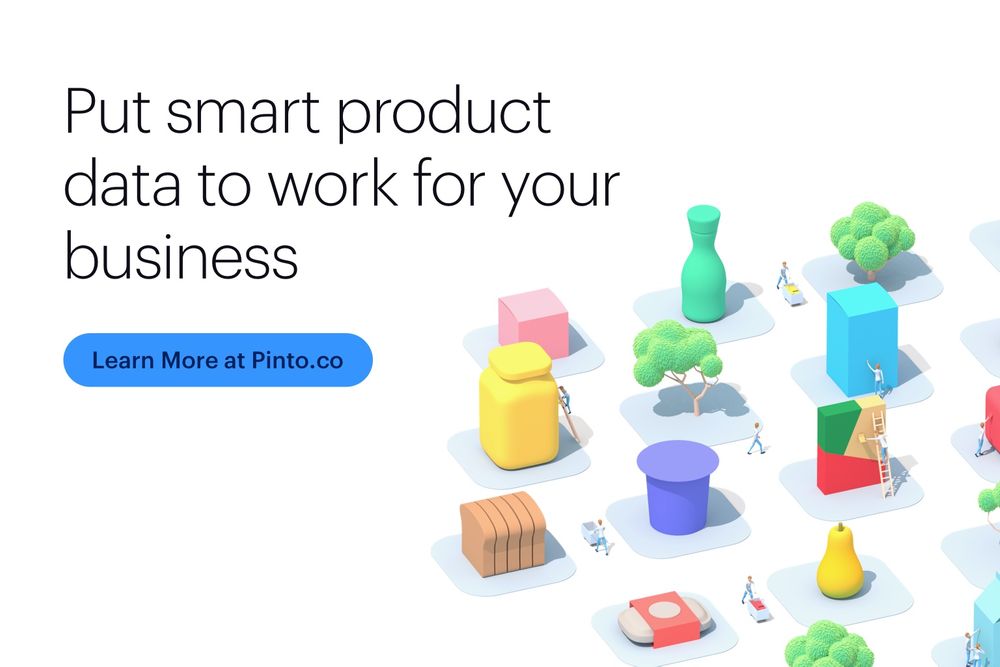- Consumer food and nutrition preferences have changed greatly over the past thirty years.
- Some notable preferences, such as organic and non-GMO, veganism, gluten-free and the ketogenic diets, have become pillars of modern regulations and merchandising.
- It is clear that consumer preferences impact retailers, and as these trends continue to evolve, so must retail spaces and product assortments.
- Modern retailers need nuanced data that can help them stay on top of changing customer needs and to keep up with the economic movements these trends bring.
Consumer food and nutrition preferences are not static but have, in fact, changed dramatically over the last twenty to thirty years. These trends have moved from more general concerns, such as low-fat or low-sodium, to product sustainability considerations, such as organic and non-GMO, and more specific and complex diet needs, such as paleo, keto, vegan, or heart health. These changes in dietary preference patterns affect shopping behaviors and impact the ways that retailers must market and merchandise their stores. And they will continue to do so as these evolving trends show no sign of slowing down. According to the 2020 IFIC Health Survey, 43% of Americans followed a diet in 2020, up from 38% in 2019 and 36% in 2018.
In order to account for these changing shopper needs, it’s important for retailers to take an agile approach to their product inventories and merchandising strategies. To be effective, they need nuanced data classification systems that can be fed up-to-date trend information on an ongoing basis. Consistent, current product data will allow retailers to respond to every new consumer demand, right down to specific preferences, with confidence and authority. Without it, retailers risk losing opportunities to personalize their service offerings and bring new and relevant products into their inventory.
Keeping up with consumer trends means covering what’s meaningful today as well as keeping an eye out for the trends that are on the horizon.
The evolution of the diet
New dietary trends regularly rise to popularity, influence manufacturer decisions, and impact consumer purchases. Let’s take a look at some of the most popular diet trends of the last decade and see how their popularity impacted the retail market.
Gluten-free
Gluten-free eating has been documented since the 1940s, when gluten was found to be the cause of celiac disease symptoms. Since then, many people have adopted gluten-free lifestyles regardless of having celiac disease. Gluten-free mandates first appeared in 2006, with the Food Allergen Labeling and Consumer Protection Act1 (FALCPA) requiring wheat displayed on all labels. Only two years later, in 2008, General Mills2 released its first gluten-free cereal. From there, we saw a steady trend of manufacturers following suit. In 2009, beer was allowed to be labeled gluten-free3 by the FDA. By 2013, the FDA established a regulatory definition of the term “gluten-free”4 for labeling foods. Today, the global gluten-free product industry is worth a whopping US$5.6 billion and is predicted to increase to US$8.3 billion by 2025.
Vegan & Plant-based
Veganism has existed since the time of the Greeks5, but became widely popular in Western diets around 2010. Originally positioned as a diet centered around animal welfare, many now follow the diet for health, sustainability, and climate change reasons. Veganism has accounted for a wide range of plant-based meat and dairy alternatives, such as nut cheeses, alternative milk products, and widely popular meat substitutes such as the Impossible Burger and Beyond Meat. In 2019, the global vegan food market size was valued at US$22 billion and is expected to continue to increase.
Organic & Non-GMO
Considerations about organic eating began in the 1900s6 as many farms began to use synthetic nitrogen fertilizers and pesticides at the start of the industrial agriculture movement. Consumers worried about the health effects of these products and searched for more natural farming methods. By the 1980s, consumer groups began pressuring for government regulation and standards of production for organic farming. Fresh produce was the primary concern, but milk, eggs, cheese, and eventually grains and snack foods also began to bear organic labels7. The organic food market is expected to reach $272.18 billion in the next six years and has become a pillar of modern preference-driven shopping.
The non-GMO movement was born from similar sentiments, and in 2012, California introduced Proposition 37, which required labels on GMO-containing foods. This has brought out a host of deliberately non-GMO produced foods and the birth of the now-ubiquitous Non-GMO Project8.
Non-GMO foods are still considered to be eco-friendly and healthy by the public. According to Research and Markets9, the industry will see significant growth in the next four years. In 2018, the non-GMO food market was valued at USD 947.8 million.
Keto
The ketogenic diet was originally introduced in the 1920s as a treatment for epilepsy10. The diet lay mostly dormant until the early 2000s, when it was then revitalized by the resurgence of Atkins and low-carb diets. Celebrities such as Joe Rogan and Tim Ferris also championed the diet, bringing it into mainstream notoriety. This popularity has resulted in many keto-friendly snacks and meal supplements making their way into mainstream retail spaces. In the U.S., popularity in keto-related searches has grown over 1000% in the last five years. In 2018, the global keto market was valued at US$9.7 billion and is expected to show similar growth in the years to come.
Fad Diets
Although the above diet trends have stood the test of time, many diets disappear just as quickly as they appear. We refer to these as fad diets, and they encompass diet trends that are popular for a time but never become regulated or make their way into a significant mainstream trend.
Some of the most popular fad diets of the past include:
— The grapefruit diet
— The cookie diet
— The master cleanse
— The blood type diet
Though these diets don’t achieve longevity, they can have a considerable influence on consumer and manufacturer behaviors. According to research from Stanford, “weight loss in America is a $60-billion industry”11 and, as a result, fad diets are unlikely to disappear.
Using data to enhance adaptability
Looking at the ways food trends have changed over the last thirty years, it is evident that retail spaces, product assortments, and the overall grocery market, are greatly impacted by consumer diets. Yet, at present, most retail datasets are still unable to truly navigate or “understand” evolving consumer food preferences and trends. Too often, retailers find themselves playing catch up because a lack of data creates a barrier for quick and efficient changes in digital catalogs, e-commerce platforms, and on-shelf merchandising. They lack the detailed data needed to curate and sort products that fit diets such as vegan, keto, organic, and more. This leaves consumers with fragmented catalogs of the foods that are available to them. For retailers, this gap opens up opportunities for competitors to step in.
Modern consumer needs are diverse, and shoppers expect personalized search options and curated product offerings. They expect this not just on e-commerce platforms, but at the aisle level as well. For example, creating a dedicated end-cap for keto-friendly foods would allow consumers with this preference to better navigate their options. Likewise, if a customer is following a plant-based diet, they will be looking for a range of products to fit their needs, not only products specifically labeled as vegan or plant-based. Creating more accurate and encompassing methods of curating and personalizing product assortments allow for better purchasing and increased consumer engagement.
In order to stay relevant, retailers need to adopt a customer-first approach to navigating diet trends, one that emphasizes robust and healthy data as well as personalized, evolving product catalogs. They also need to commit to curating and organizing product inventories alongside changing consumer trends.
With nuanced, modern data sets retailers can see, track, and anticipate future trends while keeping up with current needs and behaviors.
Healthy data for healthy humans
Having healthy data is like building a strong infrastructure for your business. It allows you to quickly adapt to new trends, provide the highest-quality information to your consumers, and explore new ways of merchandising and personalizing your store aisles.
With smart product data—data that is consistently updated, continuously curated, and regularly evolved to meet new consumer needs—retailers will be well set-up for any new consumer trend, now and in the future.
Find out how Pinto can help you evolve alongside your customers.
Endnotes
1. Food Allergen Labeling and Consumer Protection Act. (2020, August 14). Retrieved January 08, 2021, from https://en.wikipedia.org/wiki/Food_Allergen_Labeling_and_Consumer_Protection_Act
2. Gluten-free. (n.d.). Retrieved January 08, 2021, from https://www.generalmills.com/en/Health/Nutrition%20Philosophy/gluten-free
3. Weise, E. (2009, August 18). Gluten-free diets gaining in popularity. Retrieved January 08, 2021, from http://usatoday30.usatoday.com/news/health/2009-08-17-beer-gluten_N.htm
4. Food and Drug Administration. (2014). Guidance for Industry Gluten-Free Labeling of Foods Small Entity Compliance Guide. College Park, MD. U.S. Department of Health and Human Services
Food and Drug Administration Center for Food Safety and Applied Nutrition.
5. Hultin, G. (2020, July 20). The History of Vegetarian Diets: Explore the Progression of Plant-Based Eating. Retrieved January 08, 2021, from https://foodandnutrition.org/from-the-magazine/the-history-of-vegetarian-diets-explore-the-progression-of-plant-based-eating/
6. Organic movement. (2020, December 19). Retrieved January 08, 2021, from https://en.wikipedia.org/wiki/Organic_movement#:~:text=The%20organic%20movement%20began%20in,early%20days%20of%20industrial%20agriculture.
7. Haumann, B. (n.d.). Organic Standards. Retrieved January 08, 2021, from https://ota.com/organic-101/organic-standards#:~:text=These%20standards%20require%20that%20products,preservatives%2C%20sewage%20sludge%20and%20irradiation.
8. The Non-GMO Project – Everyone Deserves an Informed Choice. (n.d.). Retrieved January 08, 2021, from https://www.nongmoproject.org/
9. Markets, R. (2020, July 03). Global Non-GMO Food Market (2020 to 2025) - Industry Trends, Share, Size, Growth, Opportunity and Forecast. Retrieved January 08, 2021, from https://www.globenewswire.com/news-release/2020/07/03/2057413/0/en/Global-Non-GMO-Food-Market-2020-to-2025-Industry-Trends-Share-Size-Growth-Opportunity-and-Forecast.html
10. JW, W. (n.d.). History of the ketogenic diet. Retrieved January 08, 2021, from https://pubmed.ncbi.nlm.nih.gov/19049574/#:~:text=To%20mimic%20the%20metabolism%20of,treatment%20its%20use%20declined%20dramatically.
11. Ueda, A. (2016, January 13). Fad diets shape societal trends about health, Stanford scholar reveals in dissertation. Retrieved January 08, 2021, from https://news.stanford.edu/press-releases/2016/01/13/pr-diet-lit-johnson-011316/






